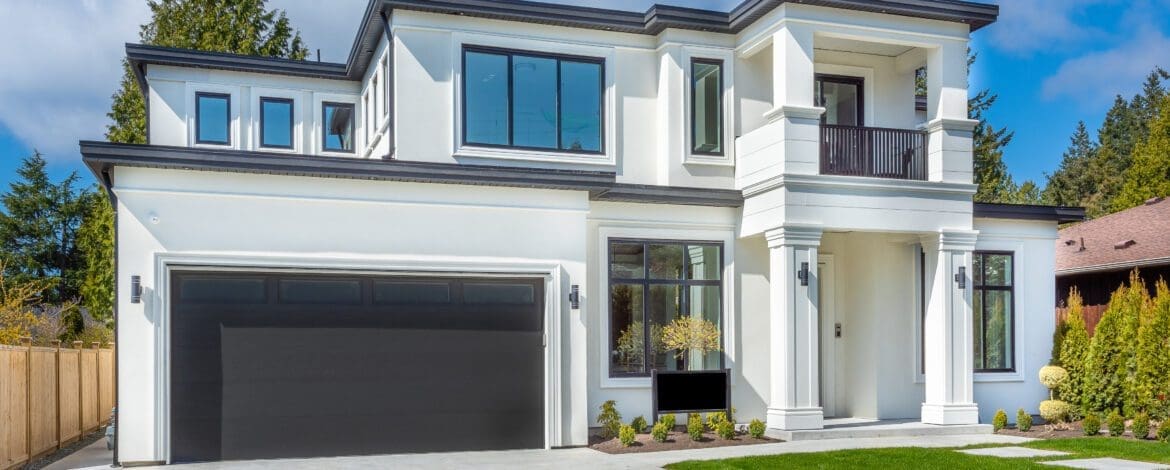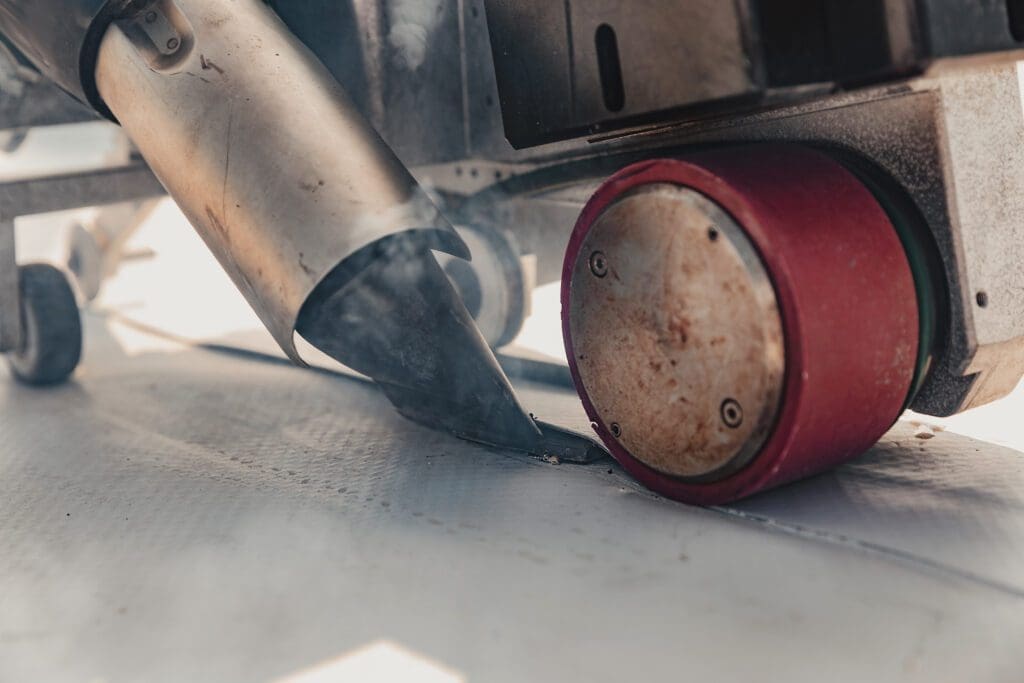Flat roofs are a unique type of roof system and they require materials designed expressly for that use. Though they’re often used on commercial buildings such as offices, warehouses, and big-box stores, flat roofs, also called membrane roofs, have become popular with architects who create stylish modern homes. As usual, you’ll find more than one choice of materials for flat roofs, including TPO and PVC. But how do they compare? Let’s take a look at TPO vs PVC roofing.
What Is PVC Roofing?
PVC is the veteran product in this comparison, having been around for more than 50 years at this point. It has a good reputation as a high-quality product that will last for several decades. How long exactly? When installed by an expert roofing contractor, a PVC roof should last for 30 years and sometimes longer. In Florida, of course, severe weather can shorted the lifespan of any building component, so don’t count on getting the maximum lifespan from any building material. That’s just the way it is when buildings have to endure heavy rain, intense sunshine and UV radiation, and the occasional hurricane.
Hurricanes, in fact, highlight the weakness in most roofing materials: vulnerability to punctures. Flying debris in a hurricane can do immense damage, but you may not be aware of it without a thorough inspection after a storm. When a flying tree branch destroys your sliding glass door, it’s obvious. But a one-inch tear in your membrane roof is tough to spot from the ground, but can still do huge damage over time.
You might end up with a leak inside that lets you know that your roof has a problem. It’s also possible that water will pool on the decking, right around the tear, and start the ugly process of rotting out your roof, but you won’t see a leak inside your home. The only way to avoid this disaster is for you to take a look at the condition of your roof after storms. A regular roof inspection is a great idea, as well.
What Is TPO Roofing?
TPO is another membrane product, which has been in use for about 30 years. Early versions were not really sorted out in the way that PVC was, and so the product’s reputation took some hits in the early days. With giant companies like GAF now offering many versions of TPO, you can have confidence in the product these days.
TPO and PVC are really much more alike than different. Both will arrive at the job site in huge rolls. Wider rolls help to minimize seams, but are more difficult to work with. Your contractor will not use adhesive at the seams, but will use hot-air welding instead. This process uses a special tool that can produce air of more than 700° F to melt the seam together. Rollers on the tool also help to join the panel and create a monolithic roof.
Another method for the seams uses adhesive, but it’s inferior. You might see a cheaper membrane called EPDM. We talked more about EPDM vs TPO in this post. This product has been used in the RV industry for decades and often has a lifespan of only 10–15 years. It cannot be hot air welded and uses adhesives at the seams and when building up around penetrations. Adhesives are not as durable as hot air welding and tend to require maintenance over the lifespan of the roof. Considering that the labor cost for any membrane roof is roughly the same, and that PVC and TPO can last twice as long as EPDM, an EPDM roof does not seem like a good value.
As for strength, TPO is a bit stronger overall than PVC. Tear strength of TPO is 55 pound-force per inch. PVC roofing comes in at 45 pound-force per inch. Not a gigantic difference, but when TPO is both stronger and a bit cheaper, it’s looking like a good choice for your flat roof.
What Do They Cost?
So let’s look at the price. Just for comparison, an EPDM roof is the cheapest single-ply membrane at roughly $1.50 per square foot, or $150 per square. A square is a roofing term meaning 100 square feet and you’ll see bids and materials labeled that way.
Next up, TPO membrane costs roughly $1.70 per square foot or $170 per square. Your total cost will be around $6–$7 per square foot, including installation
PVC is a bit more expensive at $1.90 per square foot and $190 per square. With installation, you’re looking at $6.50–$7.50 per square foot. So considering that the average home in Florida is about 1600 square feet, a basic membrane roof would cost $9600–$11,200 for TPO, and $10,400–$12,000 for PVC.
One other option that you can consider is adding rigid insulation on top of the roof decking. You can spend from roughly $150–$350 per square on polyiso or other types of rigid foam board, which is a smart choice. Adding this insulation will save you money in the long run without adding that much to the overall cost. You can talk to your contractor about how much to add in your location, but one inch to three inches is common.
Flat Roofs: TPO vs PVC Roofing
In this comparison, there’s good news: you really can’t go wrong with either material option. Both materials are a solid choice and offer a comparable price. They’ll offer comparable durability, as well. And with a competent contractor installing your new roof, you should not have to do more than normal maintenance for 25 years or so. Perhaps more.
If you’d like to talk about your flat roof options, , give us a call at 813-373-9088. Our team has more than 40 years of experience in roofing. You can also use this form and ask us, “What’s the cost for a flat roof for my home?” and we will contact you.




